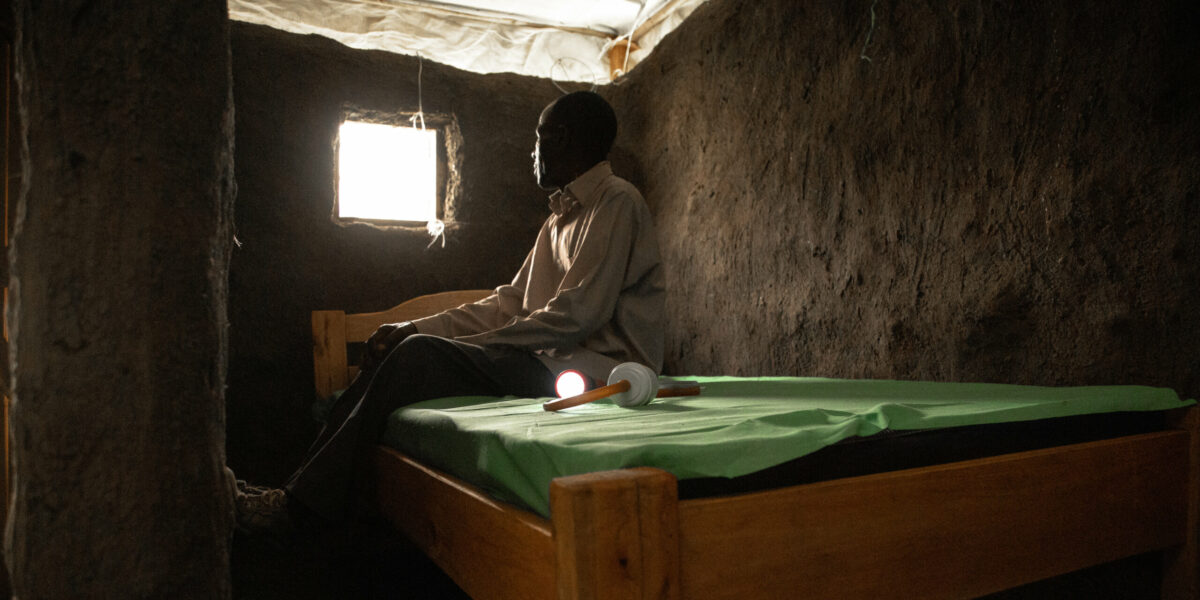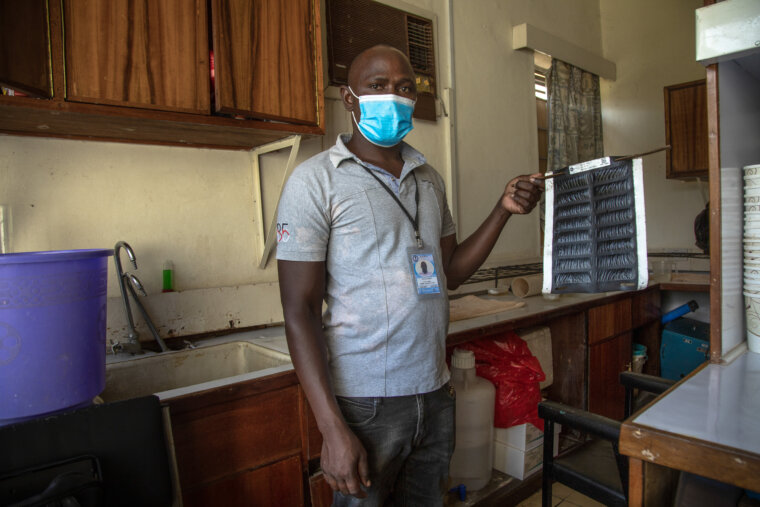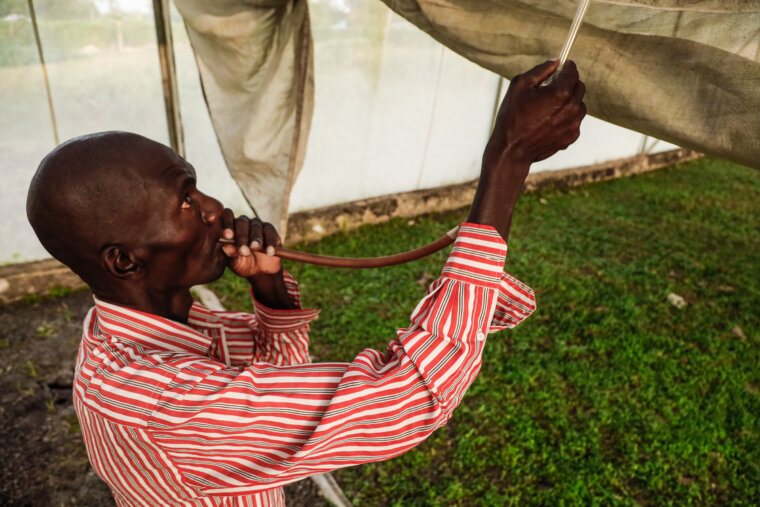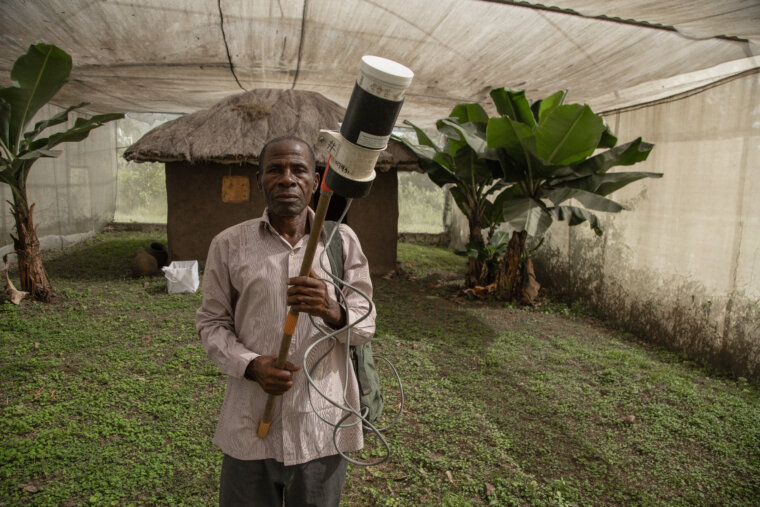

Identifying Solutions to Stop the Mosquitos Entering the Home
In Kenya, we work not only within vulnerable communities to build safe and decent homes. We also support research projects to improve life within the home.
Inside a controlled environment, a model hut has been built. This hut is part of research into how mosquitos can be prevented from entering people’s homes. This research is being conducted the Center of Global Health Research (KEMRI) in Kisumu in Kenya. As part of this research, the Terwiliger Center for Innovation in Shelter provides resources in Kisumu, Kenya.

(Pictured above) The outside of the model hut being used as part of the mosquito study.
Diseases that are spread to people by mosquitoes include Zika virus, West Nile virus, Chikungunya virus, dengue, and malaria (Centre for Disease Control and Prevention). Finding ways to prevent mosquitos from entering into people’s homes is therefore important in safeguarding people’s health.

Attractive Toxic Sugar Baits (A.T.S.B) have been created within the Kenya Medical Research Institute in Kisumu, Kenya. Nick Owino (pictured above) is one of the assistant research officers working to prevent mosquitos entering the home.

Within the controlled environment, Evans Olang (pictured above) uses a Procopac Mouth Aspirator to capture mosquitos. A Propac Mouth Aspirator is effective because it enable the collection of specimens from the ceiling and wall nets with breath.

Along with Evans, Caleb Odoyo (pictured above) assists in the capture of mosquitos. His method of capturing mosquitos is through use of a Procopac Aspirator Machine.
We support projects like the mosquito prevention project because we believe that everyone deserves a safe and decent home. By supporting research such as this, we move a step closer to preventing the spread of severe illnesses and deaths.




Comments